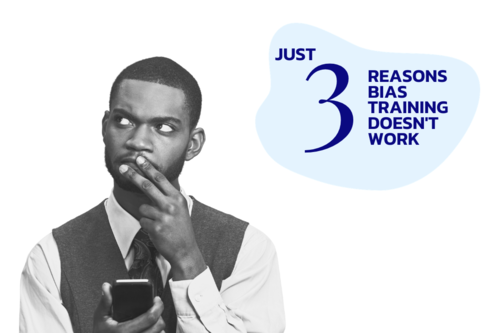FOOL US ONCE, SHAME ON US
Many decades ago, the black lesbian activist and poet (and all around inspiration and truth-teller) Audre Lorde challenged feminist academia to consider how it was reproducing the inequities of patriarchy.
Famously, Lorde declared, “the master’s tools will never dismantle the master’s house.”
She went on to clarify by asking, “What does it mean when the tools of a racist patriarchy are used to examine the fruits of that same patriarchy?” and then, by responding, “It means that only the most narrow perimeters of change are possible and allowable.”
So, we ask, how much change and equality can we expect to come from a system of interventions that were designed by guardians of the status quo, perpetrators of inequality?
UNCONSCIOUS BIAS TRAINING – THE ORIGIN STORY
Many decades ago, unconscious bias training (diversity training, cultural competence training, etc.) was born.
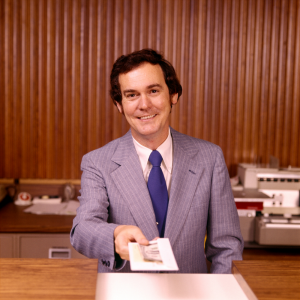
The origins of unconscious bias training (and diversity training more broadly) are rooted in the history of civil rights legislation and gender rights legislation in the US and in the introduction of equality and anti-discrimination laws around the world, proliferating in the cultural climate of the 1960s & 70s.
This was a pivotal period for social progress, it was 20+ years post World War II, immigration was on the rise, social movements were holding court, and around the world many nations were making first attempts at equality-focused (positive rights) legislation and anti-discrimination (negative rights) legislation and policy reforms – particularly with regard to employment rights.
In the US in 1964, Title VII of the Civil Rights Act – an act that prohibited employment discrimination based on race, colour, religion, sex, and national origin – was being introduced. Suddenly, companies who had discriminated freely until then were grappling with serious compliance risks and with the potential of being hauled in front of the Equal Employment Opportunity Commission for violations.
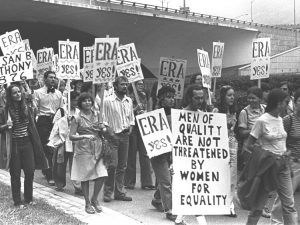
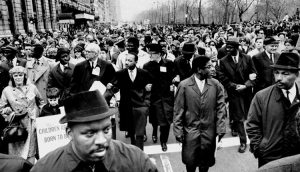
It’s important to note that the industry of “diversity consulting” was not actually born out of a progressive social movement happening in corporations, but actually, it was a corporate reaction to progressive social movements happening throughout society.
This is a critical distinction, because we need to understand that the methodologies developed then that eventually became the foundation of diversity training interventions — for example, unconscious bias training — were not necessarily born of the desire to make organizations more equal, but rather, to help organizations avoid litigation for being unequal – and that’s not quite the same thing.
So all of the interventions that flowed from that history – which, in the US context, expanded rapidly under Reagan as the workforce became radically more feminized and racially diverse – need to be looked at with a healthy skepticism. Particularly by those who are truly interested in harnessing standard diversity interventions to co-design more equal workplaces and a more egalitarian society.
We need to ask ourselves the question, what does it mean if these interventions weren’t actually designed to create equality, but were designed to limit corporate risk?
For a really interesting and thoughtful history of diversity training evolution in the American context, check out this piece by Rohini Anand (Sedexo) and Mary-Frances Winters (The Winters Group).
THE INTRODUCTION OF IMPLICIT BIAS TRAINING
In 1998, after a ten-year explosion in the prevalence of diversity training in America’s fortune 500 companies throughout the late 80s and early 90s, a test exploring Implicit Bias was introduced to the market. The Implicit Association Test (IAT), created by Anthony Greenwald (University of Washington) and Mahzarin Banaji (Harvard University), and Brian Nosek (University of Virginia), was developed, in theory, to help people uncover the implicit bias (or unconscious bias) unknowingly underpinning discriminatory decisions and interactions happening in organizations. However, years after its introduction, attempts in the early 2000s to recreate the findings of IAT research brought skepticism to the validity of the test itself, but nonetheless, an entire industry – selling what we now call “implicit bias training” or “unconscious bias training” – has grown up around the IAT concept, and has been layered – in one way or another – into corporate diversity training interventions around the globe, to become the now nearly ubiquitous bedrock of Diversity Training approaches.
So, in sum, bias training emerged from an era of unprecedented civil action toward greater equality.
But it wasn’t created by the gender equity or civil rights activists fighting for equitable employment law.
It was created by those concerned with protecting organizations against litigation.
It was created as a risk-mitigation mechanism – an answer to the question that a judge was likely to pose: “Do you have reasonable measures in place to prevent discrimination in your workplace?”
It was created so that an organization could defend itself against would-be scrutiny and say, “Yes, we have reasonable measures in place to prevent discrimination in our workplace.”
Unconscious bias training wasn’t created by people with experiences of discrimination and prejudice.
It wasn’t created by folks who were passionate about making a wave that would change the landscape and ultimately create a more equal world.
It wasn’t designed to actually work.
UNCONSCIOUS BIAS TRAINING TODAY
Fast-forward many decades and diversity training is a $10+B industry in the U.S.
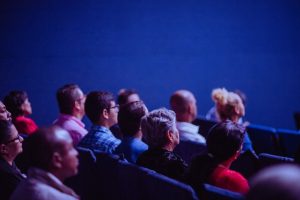
Unconscious bias training is ubiquitous in many organizations – an annual training that some folks have been participating in for many years.
It is being deployed in many contexts:
-
Mandated for MDs and other health practitioners, as well as legal professionals in California
-
Implemented by school boards across the US
-
Promised in party election platforms in Canada
-
Introduced by many law enforcement agencies across North America
-
And more…
And maybe the reasons, in these cases, are still underpinned by the risk-mitigation motivator.
But, there is no doubt that scores of folks want to create a more equal world, where all people can achieve their full potential, and expect that unconscious bias training is (part of) the answer.
But the research has been collated and distilled to a simple fact: unconscious bias training doesn’t work.
Not only that but in fact holds the ability to cause more damage than good.
LET’S OUTSMART THE (BIASED) SYSTEM

Bias imbues every element of our society – every system, process, policy, product, etc.
We will not achieve equality until we identify and uproot it and shift toward a practice, a future, an expectation where all people are considered equal and that belief is as ubiquitous as inequity is today.
But even the most progressive among us *cannot,* through sheer will, mitigate for our unconscious biases, no matter how passionate we are about creating a more equal world.
To create a world where equality is the new status quo and everyone can achieve their full potential, we need to work together to de-bias the systemic constraints that shape our lives and our socialization so that the biases we learn and internalize (and that become unconscious) from such a young age, are repurposed to champion and advance equality. With the right intervention design, we can indeed create a more equal world.
About the authors: Dr. Kristen Liesch (she/her) is co-founder of Tidal Equality, a strategy firm totally obsessed with connecting the dots between equality, effectiveness and prosperity. She works with organizations to identify and address equality barriers through strategy, system and process changes, and by learning from the lived experiences of employees and stakeholders.
Anna Dewar Gully is a skilled organizational strategist, equity activist, and Co-CEO & Founder of Tidal Equality. Prior to founding Tidal Equality, Anna spent 15+ years leading enterprise-wide strategy, organizational change, and strategic public policy initiatives — with a particular focus on equity and systems change issues — in organizations including the City of Toronto, the YMCA of Greater Toronto, The College of Physicians and Surgeons of Ontario, the Royal College of Physicians UK, and more. Since founding Tidal she has also gained significant experience in the corporate world with clients that include leading international banks, law firms, tech companies, and more. She completed her Masters at the University of London (UK) and her undergrad at McGill.
This article has been kindly repurposed and you can read the original here: Bias training doesn’t work because it was never meant to
